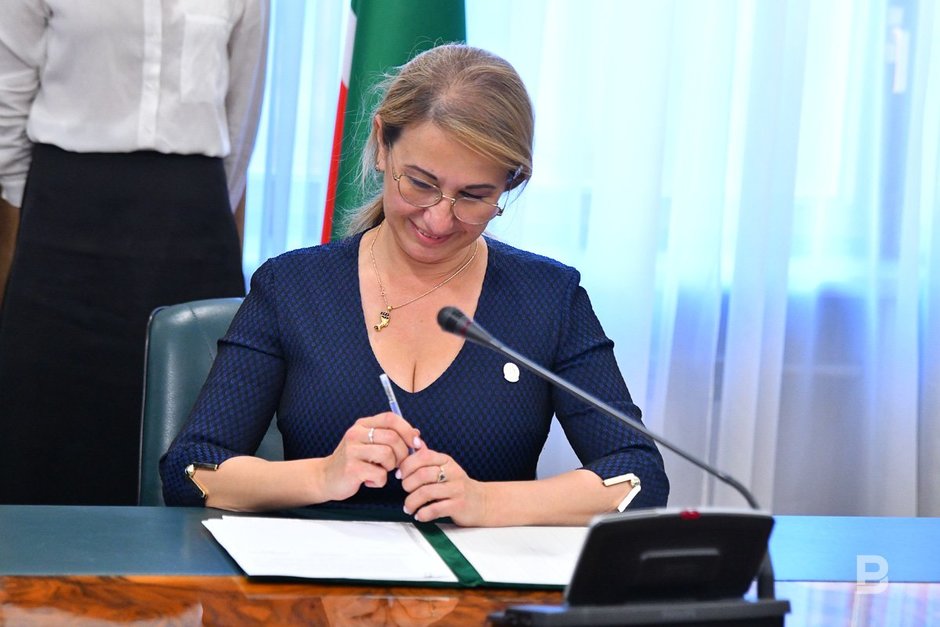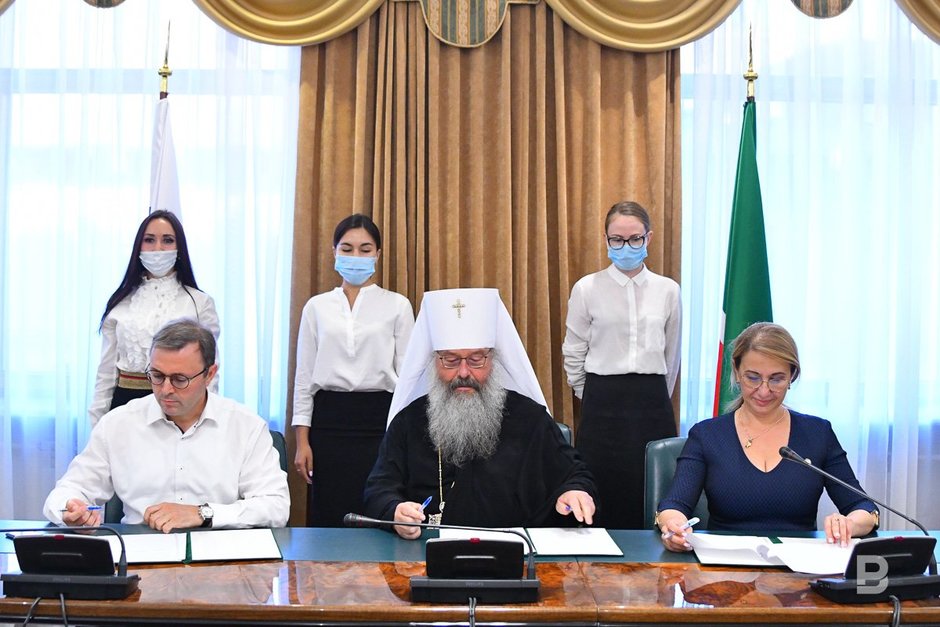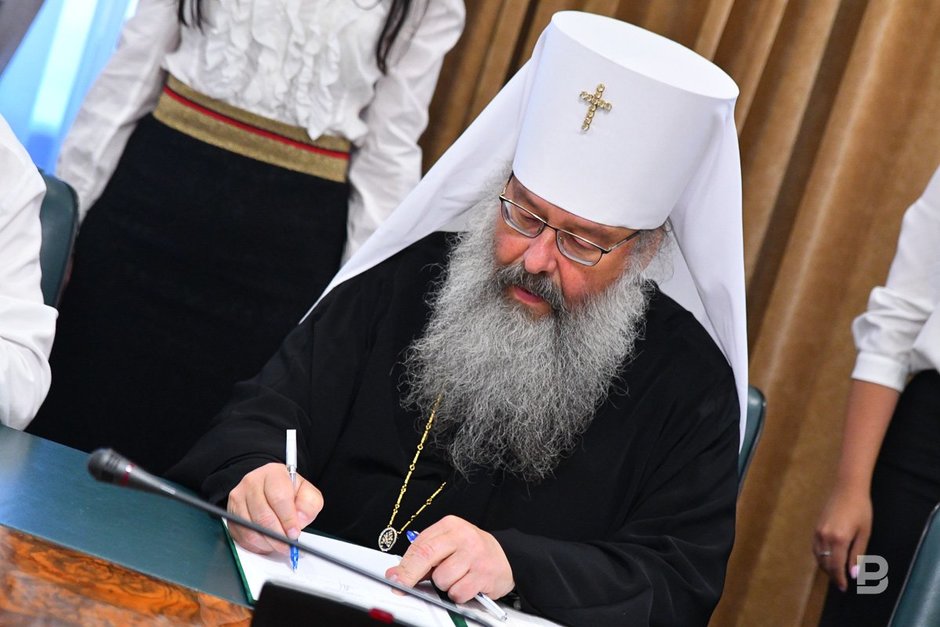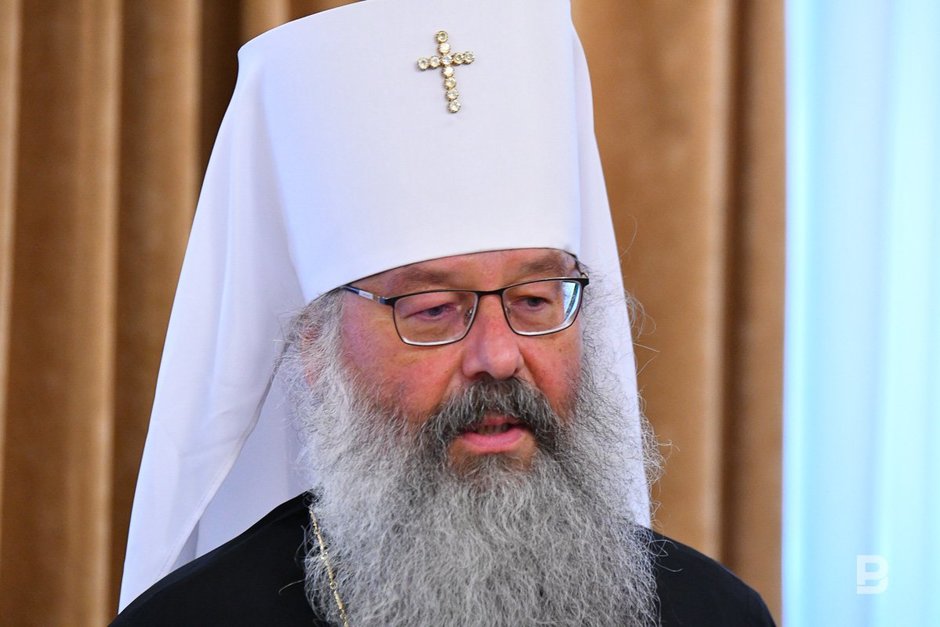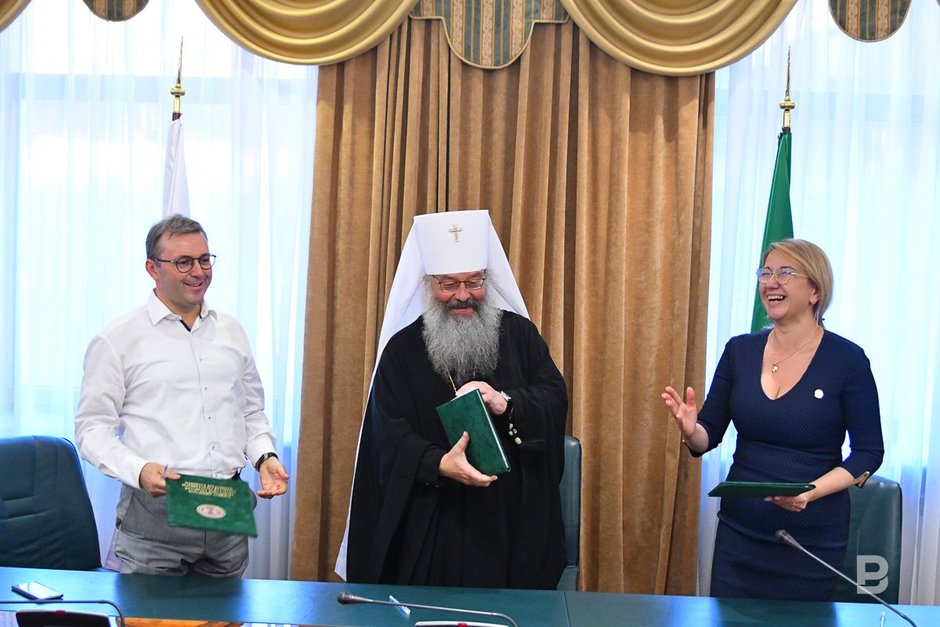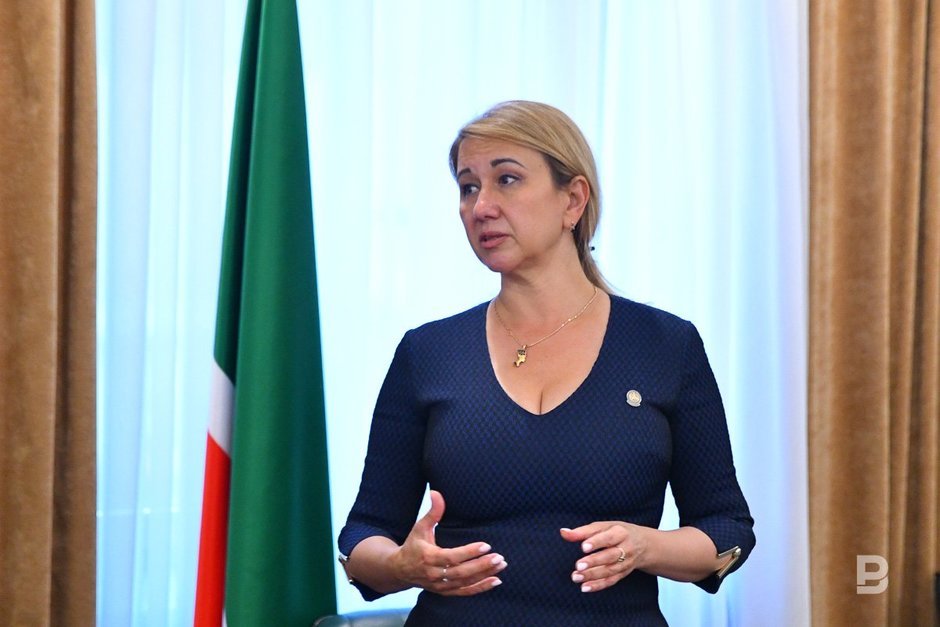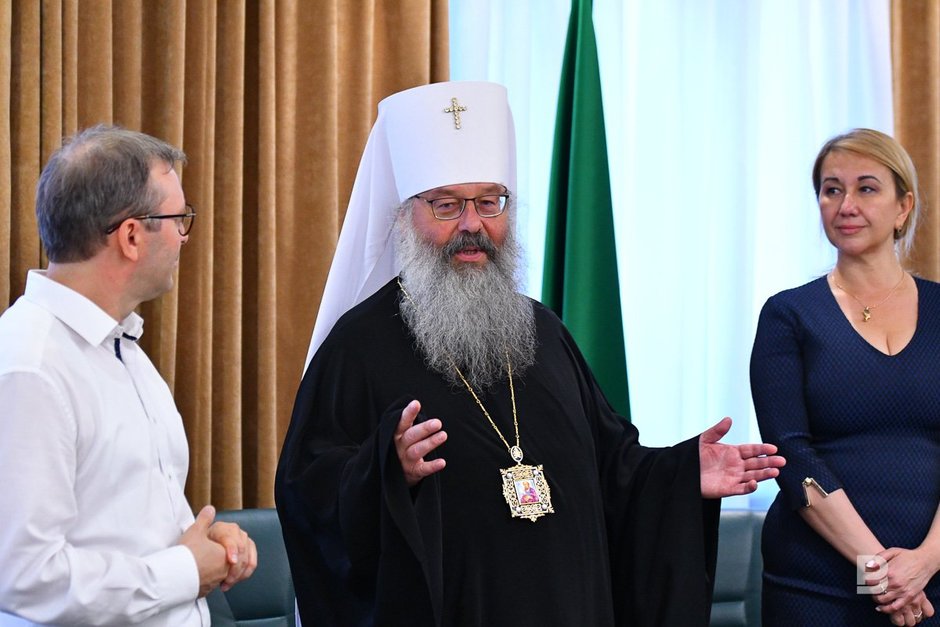Kazan Icon of the Mother of God's silver mounting to leave museum walls for the first time
The declaration of gratuitous insurance made it possible for the unique object of art to temporarily “move” from the National Museum of the Republic of Tatarstan to the recreated cathedral
The Ministry of Culture of Tatarstan signed a declaration on the patronage insurance of the silver multi-component riza-mounting, in which the original miraculous Kazan icon of the Mother of God was kept until 1904. The agreement was concluded due to that soon the treasure of Russian culture is going to leave the funds of the National Museum of the Republic of Tatarstan for the first time and go to the recreated cathedral of the Kazan Bogoroditsky Monastery. Read the details in the material of Realnoe Vremya.
Owner is the same — “home” is new
The silver vestment-frame, in which the Kazan Icon of the Mother of God was kept until 1904, is estimated at a quarter of a billion rubles. At the same time, the pearl of the museum's funds and the Orthodox shrine will be transferred on the basis of gratuitous insurance. The contract amount was 220,000 rubles. All participants of the patronage agreement — Minister of Culture of Tatarstan Irada Ayupova, Metropolitan Kirill of Kazan and Tatarstan, and Deputy Director General of AlfaStrakhovanie JSC Alexander Gorin — agree that the object transferred to the Kazan diocese is truly priceless.
“I would like to say words of heartfelt gratitude to the minister of culture of the republic as a representative of the Government of Tatarstan for the work that has come to its end today. The cathedral is ready, which will house one of the first copies of the Kazan Icon of the Mother of God — the Vatican list. And the riza is the relic that will adorn the temple," the bishop said.
According to him, the cost of the riza is so great that the Kazan diocese could not do without such an agreement. The head of the Tatarstan Metropolia noted that there have already been cases in the country when the state transferred Orthodox shrines for a long time. Thus, in 2003, Metropolitan Kirill participated in the return of the Tolga icon of the Virgin from the Yaroslavl Art Museum to the Tolga Monastery, while the miraculous image remained part of the museum's collection.
In an armored car with armed guards
The exhibition contract also includes the constant maintenance of the exhibit by the museum's specialists, the riza will have its own keeper. The frame will be transported from the museum to the Bogoroditsky Monastery on July 19 with all caution, with armed guards in the “Special Communications” car. There, the riza will take its place in one of the side chapels.
The document is issued for a year — this is the entire period of the exhibition of the riza in the cathedral. However, both the minister of culture of the republic and the head of the Tatarstan Metropolis expressed hope that it will be repeatedly extended. It is worth noting that the permission to exhibit museum value outside the walls of the museum requires a large number of documents, and not everyone is given the opportunity to participate in insurance of this level. Permission for the exhibition is issued by the Ministry of Culture of Russia. The National Museum of Tatarstan obtained it on July 5.
It is interesting that the unique Vatican list, as previously reported, will not be included in this frame. A later icon will be placed in it. A specially made display case made of armored glass will also follow the riza to the temple. Nearby, as the metropolitan promised, the Vatican list of the Virgin will also be placed, also under a special glass. However, the shrines will be located very close, there will be no restriction on the approach of believers. The only thing is that you can look at it, but you can't touch it.
Irada Ayupova: “We are happy people. We live in an era when churches are being destroyed all over the world, and in our country, in Tatarstan in particular, they are being revived”
Frame study will continue
According to the museum staff, this riza will still remain the pearl of the funds. At the same time, despite its value, rather impressive volumes and the number of components, it is still very little studied. Only today, a detailed catalog of the riza has been created and prepared for publication, a detailed photography has been carried out, further detailed study of the unique exhibit is ahead.
The riza was transferred to the National Museum of the Republic of Tatarstan in 1939 from the community of the Peter and Paul Cathedral, where after the closure of all Kazan churches all church valuables went. As it is known, at the beginning of the century before last, the miraculous icon itself was stolen, but its precious frame has survived to this day. The riza was kept in the funds of the museum for 82 years. During this time, the exhibit left the storage only twice — in 2016, it was shown at an exhibition at the Museum of Fine Arts of the Republic of Tatarstan, and in February 2021, it was presented at the National Museum itself. By the way, a special insurance contract is not required for exhibiting in museums. Therefore, the declaration became the “first swallow” for Tatarstan.
History of Russian silver in all its splendor
Deputy Director General of the National Museum of Tatarstan Lilia Sattarova said that before the exhibition the specialists of the museum cleaned the frame so that the material shone — the riza itself is made of silver, but it is gilded. So about 20 kg of gold was added to the silver. Besides, there are unique overhead stamps on it, which depict the entire history of the miraculous icon. In the fine work of jewellers and coiners, you can see both the moment of finding the shrine, and the procession led by Archbishop Hermogenes, and the work of the masters is so subtle and detailed that you can even see the smoke hanging over the roofs of the huts. The riza also has inserts made of pearls and coloured glass.
Lilia Sattarova: “One can read the history of the development of Russian silver in all its splendor by the frame”
“A massive multi-component frame of six subjects was formed during the 18-19th centuries. You can find a variety of dates on it, up to 1890, when the last item was made. However, I would like to note that one of the parts of the small frame is attributed as the work of the Moscow masters of the Armoury Chamber and dates back to the 17th century. One can read the history of the development of Russian silver in all its splendor by the frame. The ornamental decoration of the frame itself is also rich. A small frame is inserted into the large frame, and only in it the kiot is. The icon will be kept there. Previously, it was covered with glass, but now this will not be required. The icon will be covered with a chasuble decorated with precious stones and placed under a showcase," Lilia Sattarova said.
“The glory of Herostratus does not threaten us”
Lilia Satarova believes that in the future it would be nice to make a copy of the chasuble for the cathedral and return the original to the museum. Moreover, there are such examples — the State Hermitage Museum, for example, does not give away its treasures. The exception is the relics of saints. The riza, according to the museum employee, no matter how highly artistic and valuable it may be, is not a shrine.
After signing the declaration, Irada Ayupova noted that this is really an amazing event:
“We are happy people. We live in an era when churches are destroyed all over the world, but in our country, in Tatarstan in particular, they are being revived. Spirituality is the basis on which everything in our life is based — from health to financial well-being. Our happiness is that in the memory of our descendants we will remain a generation of creators who revive shrines. We will not have the 'glory' of Herostratus.”
